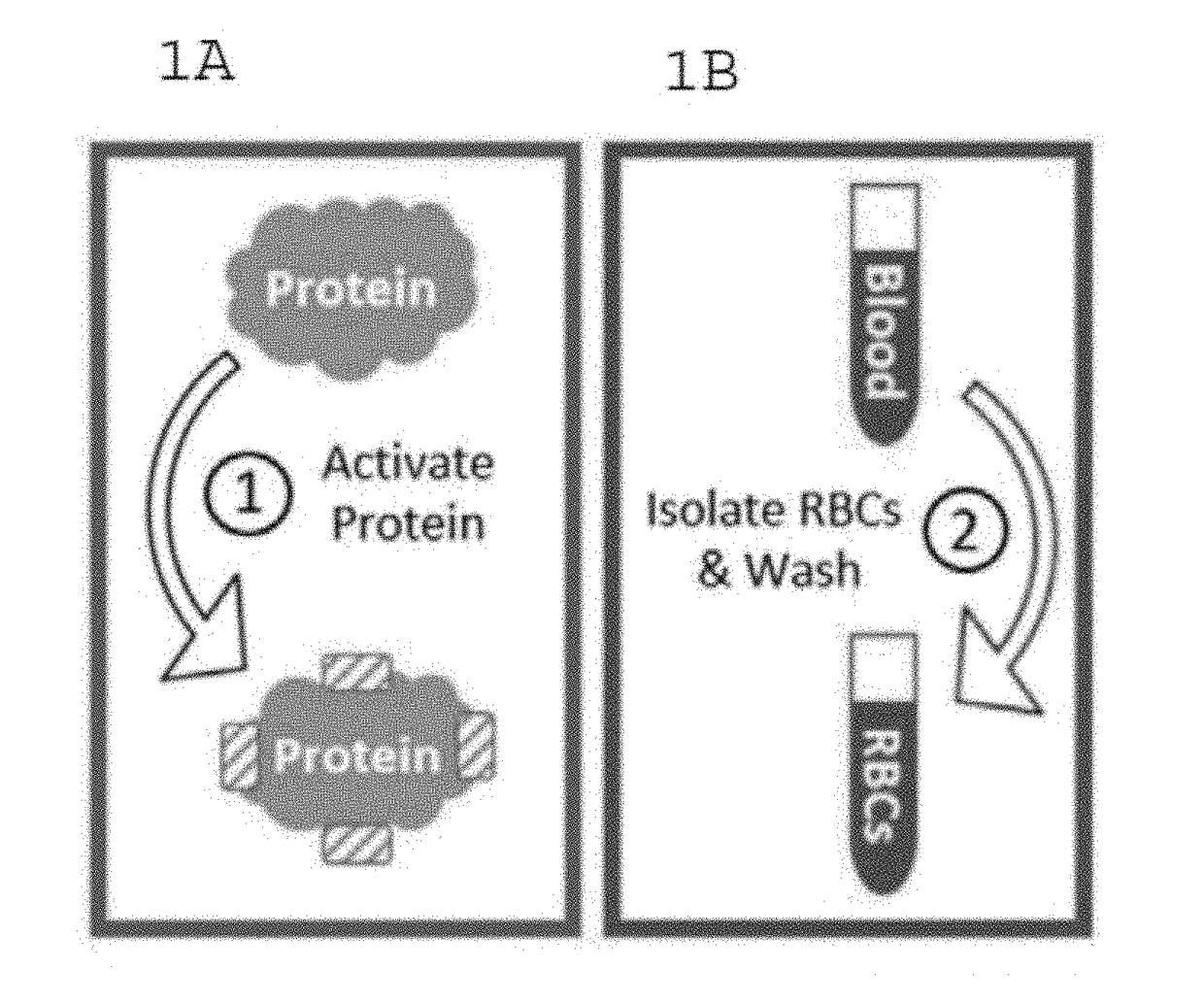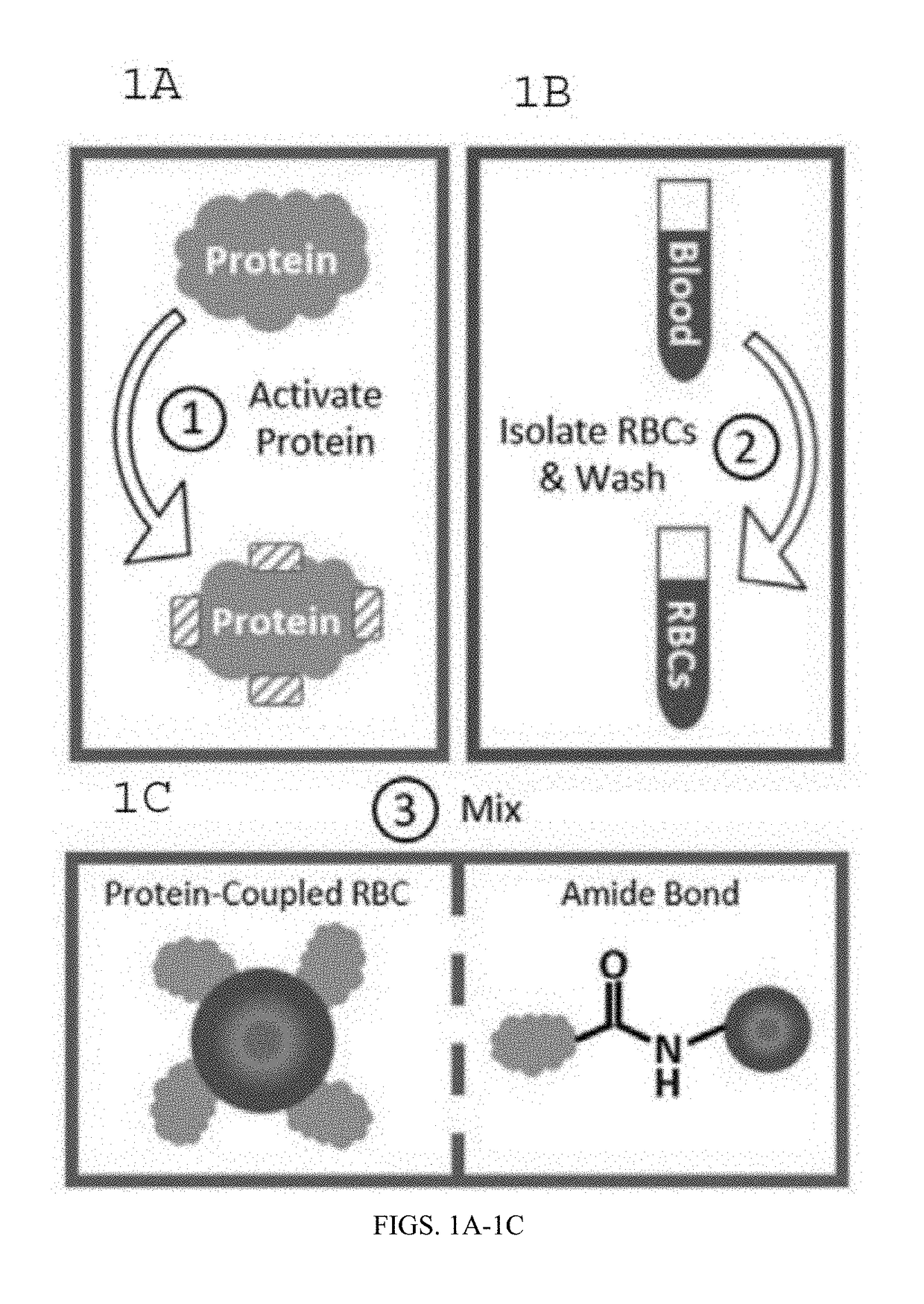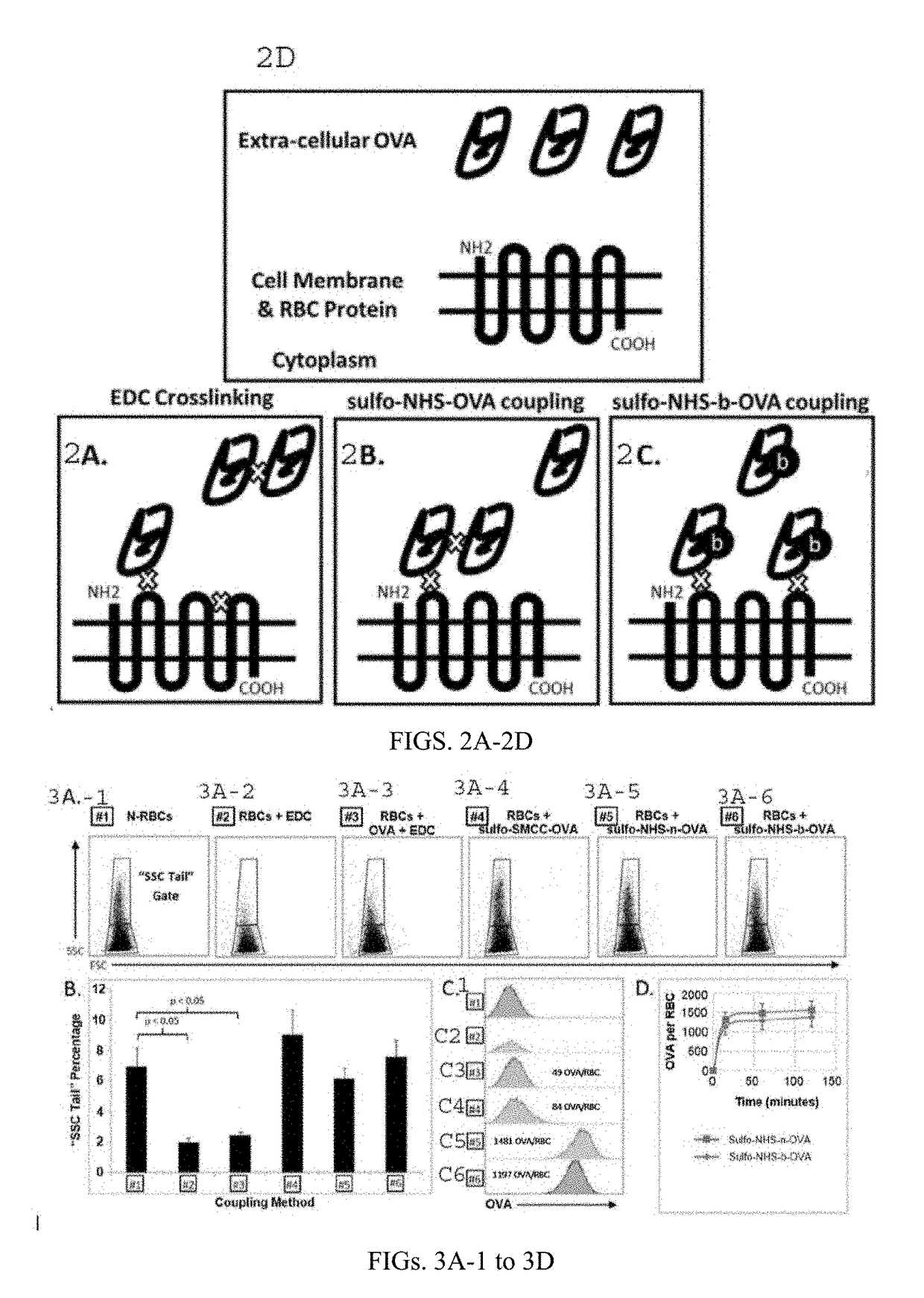Protein-Coupled Red Blood Cell Compositions and Methods of Their Use
a technology of red blood cell and composition, applied in the field of peptide/protein coupled red blood cell composition, can solve the problems of time-consuming, expensive, and time-consuming procedures, and achieve the effect of prolonging the half-life of peptide/protein
- Summary
- Abstract
- Description
- Claims
- Application Information
AI Technical Summary
Benefits of technology
Problems solved by technology
Method used
Image
Examples
example 1
Coupling Proteins to Red Blood Cells
[0096]The following is an exemplary protocol for preparing protein conjugated RBCs. The protein ovalbumin made by Gallus gallus (UniProt P01012) has a molecular weight of more than 42,000 Daltons. For best results, use sulfo-NHS-acetate (1.23 mg / 6 uL PBS buffer pH 7.2-7.6 without primary amines) to block primary amine groups on ovalbumin (0.39 mg / 39 uL PBS ph 7.2-7.6) for 0.5-3 hours at room temperature. The reaction should occur in a non-amine containing aqueous solution (such as PBS at pH of 7.2-7.6). Purify the amine-blocked-ovalbumin using a desalting column with a buffer exchange protocol (spun at 1000 g-1500 g for 2 minutes) to purify the protein into a non-carboxylate and non-amine buffer (such as 2-(N-morpholino) ethanesulfonic acid, also known as MES buffer) at pH 5-6. Amine-blocking is not necessary and the steps for amine blocking can be omitted if it is not needed. Mix the amine-blocked or non-amine-blocked ovalbumin (approximately 0.3...
example 2
Activating Peptides with NHS
[0098]The following is an exemplary protocol for activating peptides which are not soluble in aqueous solution. Dissolve 3.45 mg of NHS into 30 mL of dry ethyl acetate. Add ˜20 mMol of peptide to the NHS solution. Dissolve 6.18 gm of DCC into 10 mL of ethyl acetate and add it to the solution. Let the mixture react at room temperature overnight. For best results, perform the reaction with a nitrogen atmosphere over the solution. An insoluble precipitate, known as dicyclohexyl urea (DCU) can be removed using filtration (e.g. glass-fiber filter pad with vacuum). Then, remove the solvent from the filtered solution using a rotary evaporator under a vacuum. The NHS activated peptide can then be purified. Dissolve the NHS activated peptide into a small volume of hot ethanol. Filter the solution through a filter funnel containing a fluted glass-fiber filter pad which has been warmed to the temperature of the ethanol solution. Allow overnight recrystallization. Re...
example 3
Inducing Antigen-Specific Immune Tolerance with Peptide / Protein Linked RBCs.
[0099]Select the peptide / protein antigen to which immune tolerance is needed. Create peptide / protein linked mouse RBCs with ˜200 peptide / protein molecules per RBC. Wash away reaction byproducts. Transfuse the peptide / protein linked mouse RBCs into mice within 4 hours of creation. Wait at least 2 weeks. Evaluate the antigen-specific cellular and / or humoral immune responses. The results should demonstrate immune tolerance. Otherwise, the number of RBCs, the number of peptide / protein molecules per RBC, or the half-life of the RBCs may need to be modified.
PUM
| Property | Measurement | Unit |
|---|---|---|
| Composition | aaaaa | aaaaa |
| Water solubility | aaaaa | aaaaa |
| Coagulation enthalpy | aaaaa | aaaaa |
Abstract
Description
Claims
Application Information
 Login to View More
Login to View More - R&D
- Intellectual Property
- Life Sciences
- Materials
- Tech Scout
- Unparalleled Data Quality
- Higher Quality Content
- 60% Fewer Hallucinations
Browse by: Latest US Patents, China's latest patents, Technical Efficacy Thesaurus, Application Domain, Technology Topic, Popular Technical Reports.
© 2025 PatSnap. All rights reserved.Legal|Privacy policy|Modern Slavery Act Transparency Statement|Sitemap|About US| Contact US: help@patsnap.com



